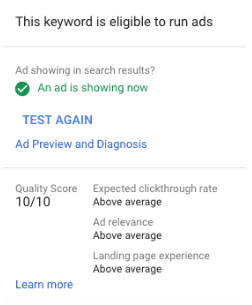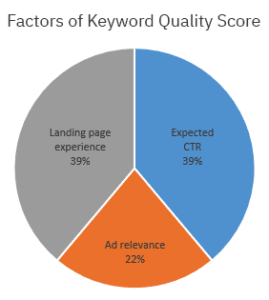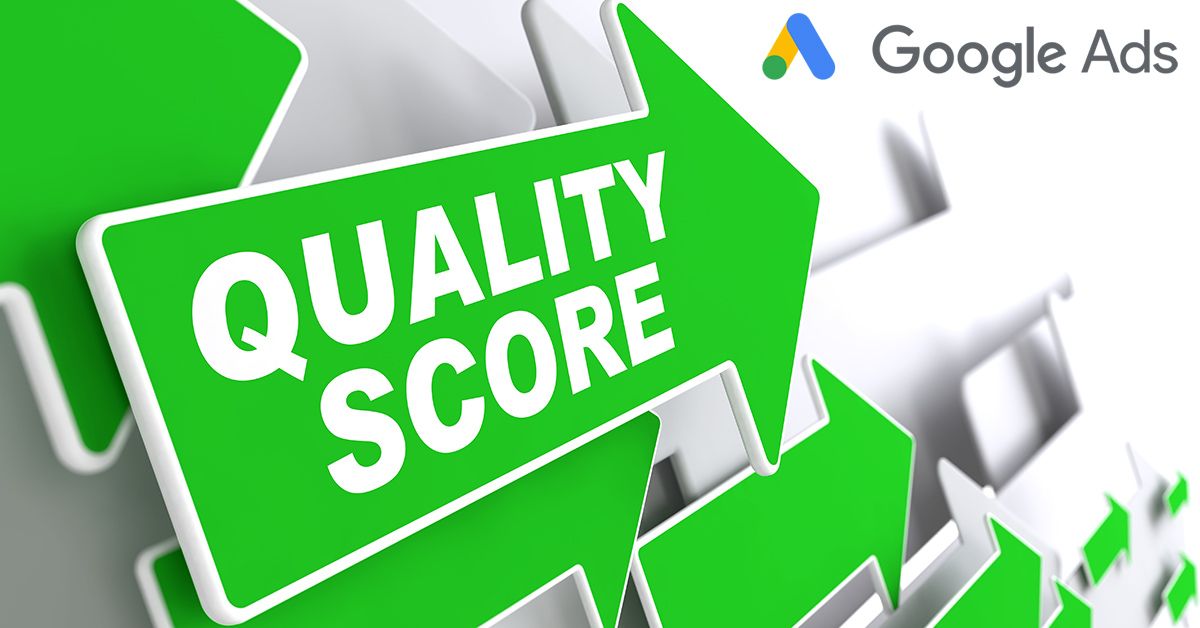How To Get A (near) Perfect Quality Score With No Google Ads Experience!
4 Minute Read
When launching a Google Ads campaign we can certainly be optimistic and hope for a quality score of 10 across all keywords. It can be challenging to get that perfect 10/10 quality score on high intent, high search volume keywords that has high competition (lots of people bidding on them). With a little work and the following tools, you can achieve a perfect score.
What is quality score?
The method of how Google determines what you pay for each click by determining the expected clickthrough rate of the ad, the quality and relevance of your ad copy and the user’s landing page experience. The better you get with using Google Ads, the less you pay per click. This happens because Google sees you, the advertiser, providing a good experience for its users. So, in turn, Google will charge you less for clicks because the user is getting what they want and you, the advertiser, are selling your goods or services at a much higher rate than the competition. It is a win win for everyone! This makes your quality score a very important metric to keep an eye on because it inevitably determines how much you are going to pay for each click on the keyword you are bidding on.

Quality Score Components
Landing Page
Your landing page experience makes up of roughly 40% of your quality score. The landing page experience status describes whether your landing page is likely to provide a good experience to customers who click your ad and land on your website. Landing pages with higher ratings are usually well organized and have text that relates to a person’s search terms. You should make sure your landing page is clear and useful to customers and that it is related to your keyword as well as what customers are searching for. A “below average” status means that you should consider some changes to improve your website’s landing page.
Expected CTR
Expected click through rate makes up of roughly 40% of your quality score. Your expected CTR is determined based on a keyword status that measures how likely it is that your ads will get clicked when shown for that keyword, irrespective of your ad’s position, extensions, and other ad formats that may affect the prominence and visibility of your ads. Google Ads takes into account how well your keyword has performed in the past based on your ad’s position. The expected clickthrough rate (CTR) that Google Ads provides for a keyword in your account is an estimate based on the assumption that the search term will match that keyword exactly. At auction time (when someone’s search terms triggers one of your ads), Google Ads calculates a more accurate expected CTR based on the search terms, type of device, and other auction-time factors. A “below average” status means that you should consider changing your ad text so that it’s more closely related to your top keywords.
Ad Relevance
Ad Relevance makes up about 20% of your quality score. Ad relevance measures how closely related your keyword is to your ads. A “below average” status means that your ad or keyword may not be specific enough or that your ad group may cover too many topics. Try creating tightly-themed ad groups by making sure that your ads are closely related to a smaller group of keywords.
Keys to improve your ad quality:
- Create very specific ad groups
- Choose your keywords carefully
- Include keywords in your ad text
- Create simple and enticing ads
- Use a strong call to action (CTA)

With these components working together you will maintain a high quality score, pay the least amount for your keywords, and dominate position one of paid search.
If you are still curious about how your keyword’s quality score affects your campaign, let’s look at the math behind the auction.
How Is My Cost Per Click Calculated?
There are a few factors that go into determining the actual cost per click. First is your set max bid, which is the most you are willing to pay for a click. Then your keyword’s quality score and, finally, your ad rank.
Cost per click is calculated by taking the Ad Rank of the person below you divided by your quality score.
Ad Rank is calculated by multiplying your quality score by your max bid.
Let’s assume advertisers A, B, C, and D are all bidding on the same keyword and there are only 3 available ad positions.
| Max Bid | Quality Score | Ad Rank | Actual CPC | |
|---|---|---|---|---|
| Advertiser A | $6.25 | 7 | 43.75 | $3.00 |
| Advertiser B | $7.00 | 3 | 21 | $6.66 |
| Advertiser C | $2 | 10 | 20 | $1.50 |
| Advertiser D | $3 | 5 | 15 | Out of Auction |
Advertiser A CPC = 21 (Ad Rank of Position 2) / 7 (Quality Score) = $3.00
Advertiser B CPC = 20 (Ad Rank of Position 3) / 3 (Quality Score) = $6.66
Advertiser C CPC = 15 (Ad Rank of Position 4) / 10 (Quality Score) = $1.50
Advertiser D = Outbid and no ad is shown
You can see in this example that Advertiser C paid the least for their click due to their 10 quality score. If Advertiser C had a max bid of $4.50 along with their 10 quality score, they would have won the first position in this auction, despite not having the highest max bid. It is clear that quality score is pivotal in the amount you pay per click.
